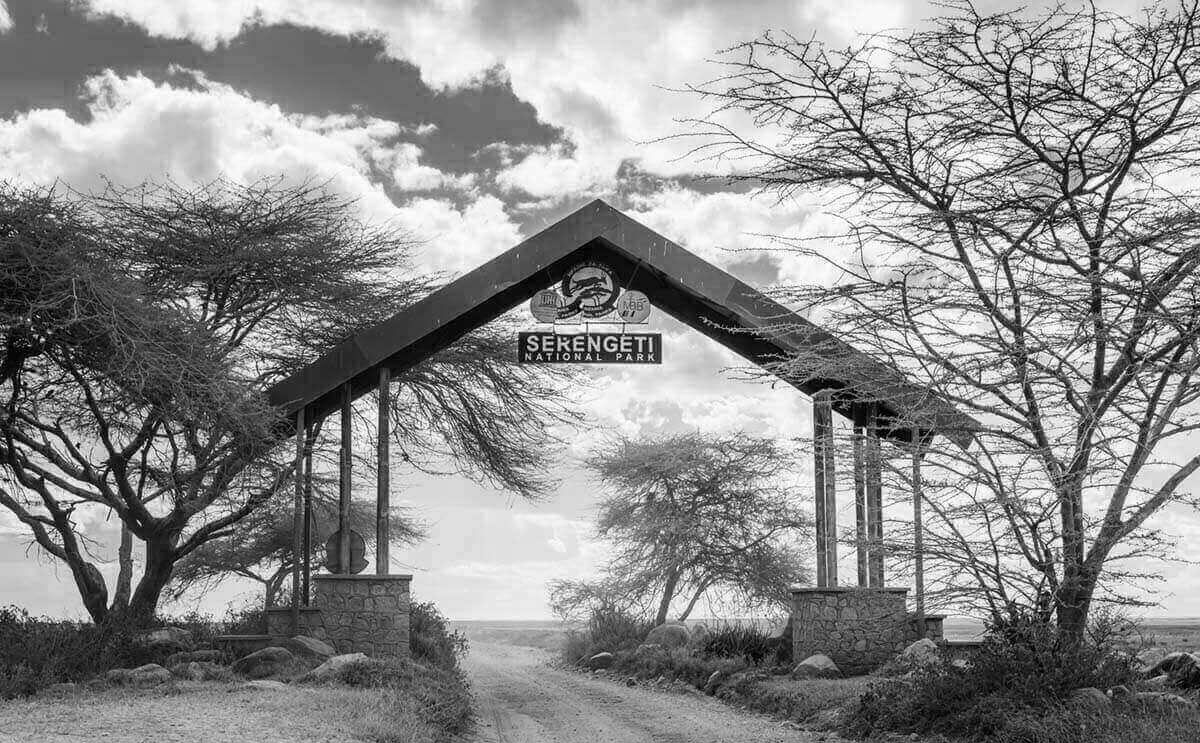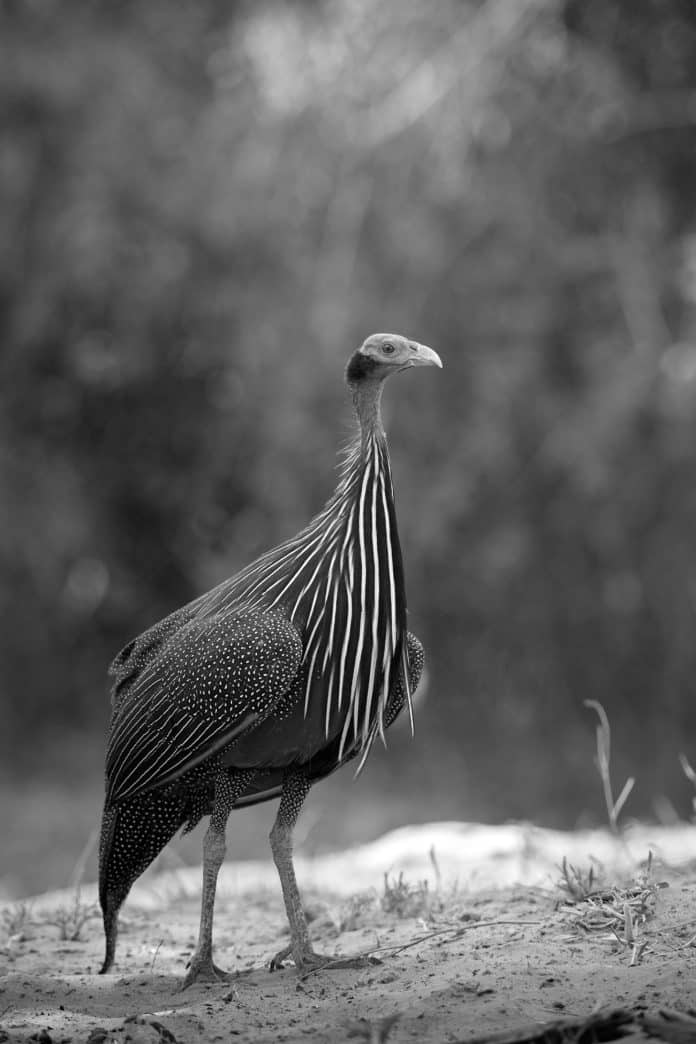Witness the Vibrant Splendor of Vulturine Guineafowl in Tanzania: A Wildlife Experience Like No Other
When it comes to the diverse and awe-inspiring wildlife of Tanzania, the vulturine guineafowl stands out as an extraordinary and captivating species. With its striking appearance and unique behavior, witnessing the vibrant splendor of vulturine guineafowl in Tanzania is an experience like no other. Found in the arid and savannah regions of the country, these magnificent birds are a true testament to the beauty and diversity of Tanzania’s wildlife.
The Habitat and Behavior of Vulturine Guineafowl
Vulturine guineafowl are primarily found in the northern regions of Tanzania, particularly in areas such as Serengeti National Park and Tarangire National Park. They inhabit the savannah grasslands and open woodlands, where they can find their preferred diet of seeds, insects, and small reptiles. These birds are known for their distinctive appearance, with their blue feathers, long legs, and bare, brightly colored head and neck.
One of the most fascinating aspects of vulturine guineafowl is their social behavior. They live in large flocks, often numbering in the hundreds, and have a strict hierarchy within their groups. The dominant male, distinguished by its larger size and more vibrant colors, leads the flock and ensures the safety and well-being of its members. They communicate through a variety of vocalizations, including high-pitched calls and soft clucking sounds.
The Significance of Vulturine Guineafowl in the Ecosystem
Vulturine guineafowl play a crucial role in the ecosystem of Tanzania. As seed dispersers, they help to maintain the balance of plant species by spreading seeds across different areas through their droppings. This contributes to the regeneration and diversity of plant life in the savannah regions. Additionally, their feeding habits help control insect populations, reducing the risk of pest outbreaks that could harm other wildlife and vegetation.
Furthermore, vulturine guineafowl also serve as an indicator species for the overall health of the ecosystem. Their presence and behavior can provide valuable insights into the quality of the environment and the availability of food sources. Monitoring their populations and observing any changes in their behavior can help conservationists assess the impact of human activities and make informed decisions to protect both the guineafowl and their habitat.
The Best Time to Observe Vulturine Guineafowl in Tanzania

To witness the vibrant splendor of vulturine guineafowl in Tanzania, it is essential to plan your visit during the dry season, which typically occurs between June and October. During this time, the vegetation is less dense, making it easier to spot these magnificent birds as they move through the grasslands in search of food. The dry season also coincides with the annual wildebeest migration in Serengeti National Park, providing an incredible opportunity to witness the guineafowl interacting with other wildlife.
Moreover, early morning and late afternoon are the best times of the day to observe vulturine guineafowl. As diurnal birds, they are most active during these periods, engaging in foraging and social activities. The golden light of sunrise and sunset adds a magical touch to your wildlife experience, enhancing the vibrant colors of the guineafowl’s plumage and creating stunning photographic opportunities.
Where to Find Vulturine Guineafowl in Tanzania
Tanzania offers several prime locations for observing vulturine guineafowl in their natural habitat. Serengeti National Park, with its vast grasslands and abundant wildlife, is a top choice for wildlife enthusiasts. The park’s open plains and acacia woodlands provide the perfect environment for the guineafowl to thrive. Tarangire National Park, known for its diverse birdlife, is another excellent destination to spot these magnificent birds. The park’s baobab-dotted landscape and the Tarangire River attract a variety of wildlife, including vulturine guineafowl.
In addition to the national parks, the Maasai Steppe region in northern Tanzania is also worth exploring. This lesser-known area offers a more off-the-beaten-path experience, allowing you to observe vulturine guineafowl in a quieter and less crowded environment. The expansive grasslands and picturesque landscapes make it an ideal setting for wildlife photography and a truly immersive wildlife experience.
Other Wildlife Species You May Encounter While Observing Vulturine Guineafowl
While on your quest to witness the vibrant splendor of vulturine guineafowl in Tanzania, you are likely to encounter a plethora of other fascinating wildlife species. The national parks and conservation areas of Tanzania are home to an incredible array of animals, including the iconic African elephants, majestic lions, graceful giraffes, and elusive leopards. You may also come across zebras, wildebeest, buffalo, and various antelope species, showcasing the diverse ecosystem of Tanzania.
Bird enthusiasts will be delighted by the abundance of avian species in Tanzania. Apart from vulturine guineafowl, you may spot ostriches, secretary birds, hornbills, and a variety of colorful bee-eaters and rollers. Keep your eyes and ears open, as every corner of Tanzania’s wilderness holds the potential for an unforgettable wildlife encounter.
Tips for Photographing Vulturine Guineafowl in Tanzania
Capturing the vibrant splendor of vulturine guineafowl through photography requires careful planning and technique. Here are some tips to help you capture the essence of these magnificent birds:
- Use a telephoto lens: Vulturine guineafowl can be quite skittish, so a telephoto lens with a long focal length will allow you to photograph them from a distance without disturbing their natural behavior.
- Pay attention to composition: Experiment with different angles and perspectives to create visually appealing compositions. Consider incorporating the surrounding landscape or capturing the intricate details of the guineafowl’s plumage.
- Be patient and observant: Spend time observing the guineafowl’s behavior and movements. This will enable you to anticipate their actions and capture unique moments, such as courtship displays or interactions within the flock.
- Utilize the golden hours: Take advantage of the soft, warm light of sunrise and sunset to enhance the colors and textures of the guineafowl. The directional light during these periods adds depth and dimension to your photographs.
Remember to always prioritize the welfare of the wildlife and follow ethical photography practices. Respect their space and avoid disturbing their natural behavior for the sake of a photograph.
Conservation Efforts for Vulturine Guineafowl in Tanzania
As with many species in the wild, vulturine guineafowl face various threats to their survival, including habitat loss, illegal hunting, and climate change. Recognizing the importance of conserving these magnificent birds, Tanzania has implemented several initiatives to protect their habitat and promote their well-being.
National parks and conservation areas play a crucial role in safeguarding vulturine guineafowl populations. Strict regulations are in place to control human activities and ensure the preservation of their habitats. Additionally, community-based conservation projects involving local communities have been established to foster a sense of ownership and responsibility towards the protection of wildlife, including the vulturine guineafowl.
Tourism also plays a significant role in supporting conservation efforts. Responsible wildlife tourism contributes to the local economy and provides funding for conservation initiatives. By choosing ethical tour operators and practicing sustainable travel habits, visitors can actively participate in the conservation of vulturine guineafowl and their habitat.
Planning Your Trip to See Vulturine Guineafowl in Tanzania
Before embarking on your journey to witness the vibrant splendor of vulturine guineafowl in Tanzania, there are a few essential factors to consider:
- Choose a reputable tour operator: Select a tour operator with a strong commitment to responsible tourism and wildlife conservation. Look for operators who prioritize ethical practices, have knowledgeable guides, and support local communities.
- Research the best time to visit: As mentioned earlier, the dry season between June and October is ideal for observing vulturine guineafowl. However, it is essential to research the specific months within this period that offer the best chance of sightings.
- Plan your itinerary: Tanzania offers a multitude of wildlife destinations. Consider combining your vulturine guineafowl experience with visits to other iconic locations, such as the Ngorongoro Crater and Mount Kilimanjaro. Consult with your tour operator to create a well-rounded itinerary that suits your interests and preferences.
- Pack appropriately: Tanzania’s climate can vary significantly, so pack clothing suitable for both warm days and chilly nights. Don’t forget to bring your camera equipment, binoculars, sunscreen, insect repellent, and a sturdy pair of walking shoes.
Conclusion: A Memorable Wildlife Experience with Vulturine Guineafowl in Tanzania
Witnessing the vibrant splendor of vulturine guineafowl in Tanzania is an unforgettable wildlife experience. From their striking appearance to their unique behavior, these magnificent birds captivate the hearts and minds of all who encounter them. As you explore the savannah grasslands and open woodlands of Tanzania, you will not only witness the beauty of vulturine guineafowl but also gain a deeper appreciation for the incredible diversity and importance of Tanzania’s ecosystem.
So, plan your trip, immerse yourself in the wonders of nature, and let the vibrant splendor of vulturine guineafowl in Tanzania leave an indelible mark on your soul.
For more articles related to Wildlife in Tanzania (Animals), click here!

































